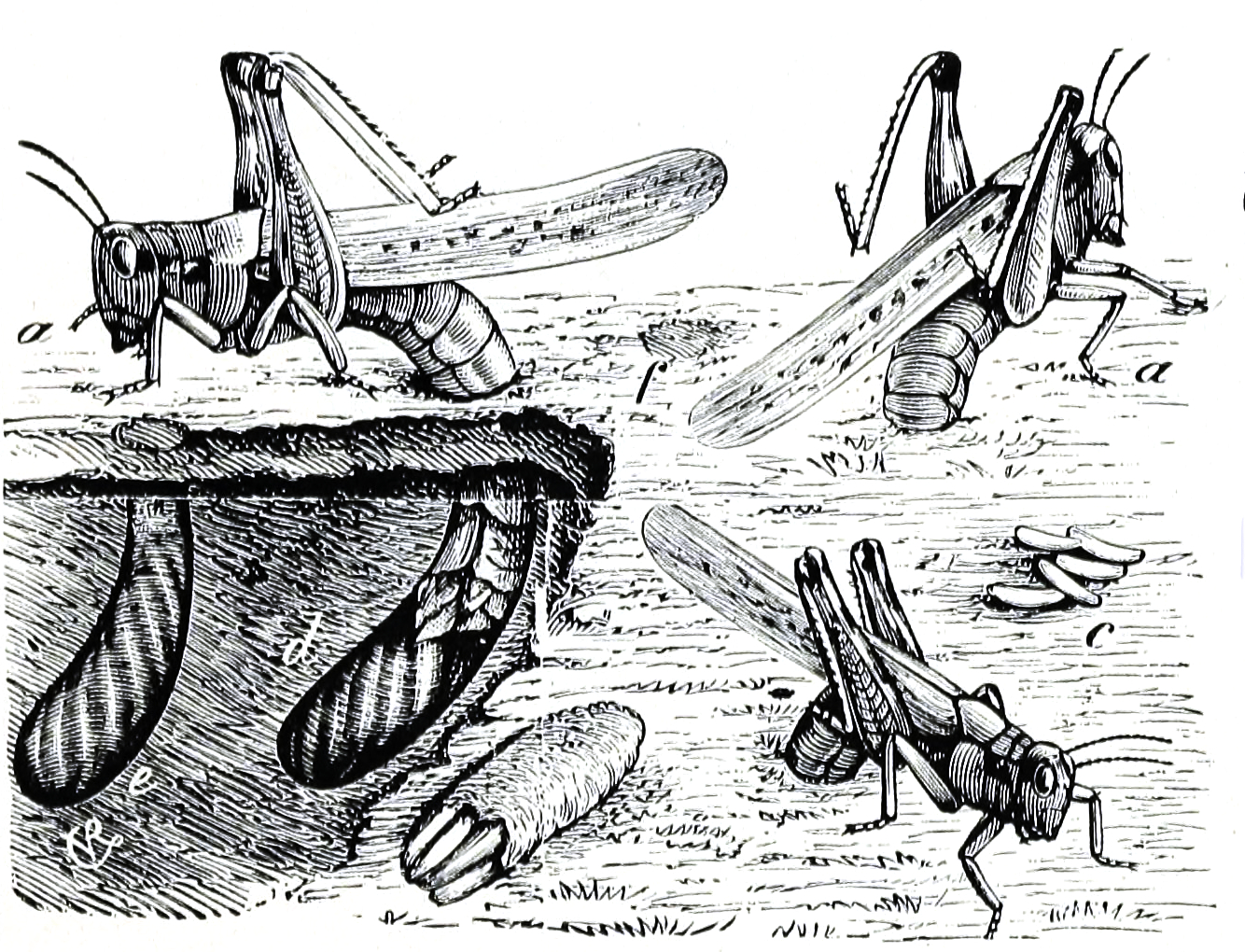| Illustrations like this one from Frank Leslie's Weekly of prairie farmers trying to catch and bag the devouring locust could not capture the true desperation and horror. |
On July 20, 1875, the second year of a prolonged drought, farmers
in eastern Colorado looked up to see an odd,
shimmering cloud boiling towards them.
It was the head of a swarm of Rocky Mountain Locust that would eventually grow to be 1,800 miles long and 110 miles wide and stretch from southern Canada
to north Texas covering an area
larger than California. The swarm contained an estimated 3.5 trillion insects and may have been
the largest concentration of individuals
of any species in world history.
The locusts, a species of grasshopper,
should not be confused with the Mormon Crickets that had devastated Utah decades earlier.
The locusts were insatiable and stripped fields in minutes.
They ate anything—leaves and bark off of trees, fence
posts, tool handles, laundry left hanging. They even devoured the harnesses off of mules in the field. There were reports of men having the clothing eaten off of their backs. In some
places the locusts were up to a foot deep
on the ground.
| A contemporary plate of the home range of the locust and the extent of the Great Swarm. |
Laura
Ingles Wilder in her book On the Banks of Plum Creek described
the swarm descending on the family’s
Minnesota farm:
The cloud was hailing grasshoppers.
The cloud was grasshoppers. Their bodies hid the sun and made darkness. . . .
The rasping whirring of their wings filled the whole air and they hit the
ground and the house with the noise of a hailstorm. . . . Laura had to step on
grasshoppers and they smashed squirming and slimy under her feet.
Except along a few river valleys, wide-spread farming was relatively
new to the high plateau Great Plains. Only 15 years earlier at the end of the Civil War it was marked as the Great American Desert on most maps and was the home of vast buffalo herds
and the Native American tribes that hunted them. But the coming of railroads, intense hunting of the buffalo herds, and the Homestead Act had rapidly opened the area to pioneer
dry land farming.
 |
| Clearing the field and burning the carcases of dead locust after the swarm has moved on. Note the trees denuded in mid summer. |
The locusts had traditionally had a
roughly seven year cycle between major
swarms and the swarms grew in size
when conditions were dry and the soil dusty. Conditions were perfect in
1875 and the new crops provided new food sources. Smaller, localized swarms broke out the next
two years.
Then the drought broke and the area entered an extended period—virtually up to the Dust Bowl era—of unusually
wet conditions. Year to year farmers
waited with dread for the expected reoccurrence of the swarms. But they
never came. Instead the once ubiquitous creatures evidently became extinct. The two
last living specimens ever collected were found in southern Canada in 1902.
Extensive tests of DNA in grasshopper specimens collected over the region have never turned up a match and scientists
have discounted a theory that more common grasshoppers could somehow mutate into swarming locusts. As it is, localized grasshopper infestations do millions of dollars in crop damage in dry years, but nothing on the
scale of the locusts.
The exact cause of the sudden disappearance may never be known. A few entomologists
suggest some kind of mite or other parasite. Most, however, believe that the very success of the final main swarm and the
persistence of farming may have doomed the species.
The insects typically deposited their eggs in the sandy soil of river valleys. The huge numbers in this swarm deposited
equally huge numbers of eggs. But the
river valleys—and their critical access
to vital water—were most attractive
to settlers who noted the presence of
millions of white “grubs” when plowing the ground in subsequent
years. The farms that were the victims of the swarm thus disrupted the natural breeding cycle
and the species could not adapt.
The 1875 swarm may also have been nearly fatal to the dwindling herds of already over-hunted
buffalo. The insects ate the prairie grass as well as crops. By 1880 they were nearly gone and the tribes
that depended on them in a virtual state
of starvation, hastening their agreement
to be confined to reservations
and go on government beef rations.
The disappearance of the locust
threat, on the other hand, plus the years of unusually high rain fall, led to
an explosion of dry land farming and
population on the Great Plains. After the collapse of the Dust Bowl, remaining farmers turned to irrigation drawing on the vast Colorado Aquifer. But that source has been dangerously drained and scholars
believe wide-spread farming in much of the region will become unsustainable. Some
have even suggested abandoning
agriculture in the area entirely and allowing
the land to go back to its original prairie. Nature
is seeking a balance.

No comments:
Post a Comment